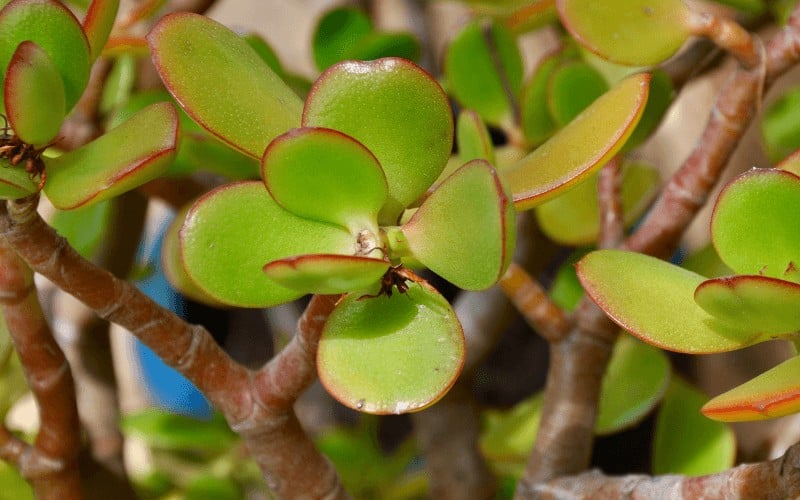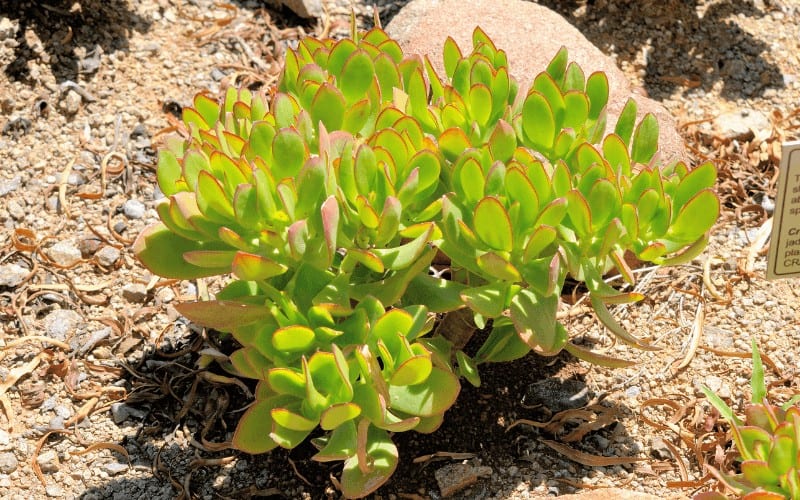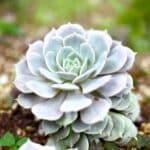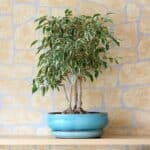The jade plant is an evergreen plant with thick branches. It has thick, shiny, smooth leaves that grow in opposing pairs along the stems. Jade plants are regarded as ornamental houseplants, and more so, the plant has medicinal purposes.
It is a sad sight to witness the beautiful, advantageous plant dying, which is why, in this article, we're going to show you how to save a dying jade plant.
The jade plant usually dies as a result of improper watering. Thus, to save a dying jade plant, you need to learn how to water it properly.
This post will enlighten you on how to save this plant from dying and further steps to take to have a healthy jade plant.
Let’s dive in!
Table of Contents
What Causes A Jade Plant to Die?
Apart from insect pests that affect plants, the common reason you have an unhealthy jade plant is improper watering. The way you water a jade plant goes a long way in determining how healthy the plant will be.
Most gardeners make the mistake of watering the jade plant equally in all seasons, which shouldn't be the case. In warm weathers like spring, summer, and fall, you may need to water the jade soil more frequently to keep the soil lightly moist.
By the winter season, your plant needs to take a rest break. Overwatering in winter is the most common reason for a dying jade plant. This is because the roots begin to rot when you give them more moisture than they can absorb.
What Are the Symptoms of a Dying Jade Plant?

You don’t just wake up one morning with a dead jade plant. There are telling signs which are the plant's way of communicating with you. Below are some symptoms of a dying jade plant
1. Branches falling off
Jade leaves could fall prematurely from being too wet or too dry, for lack of nitrogen in the soil or the need for more sunlight. Quite often, mealybugs attack this succulent.
Remove them by hand, using a cotton swab dipped in alcohol; repeat the treatment once a week until there are no more bugs. Jade plants also need a potting mix that rapidly drains off any excess moisture.
2. Yellowing of the leaves
Most often than not, yellow jade leaves signify that the plant is being overwatered. Although, in exceptional cases, a yellowish jade leaf might indicate nutritional issues.
To avoid this, ensure that your jade plant is never sitting in water. If your jade plant is potted, the container or bucket should have drainage holes to prevent excess water sitting on the bottom of the plant.
3. Root rot.
Saturated soil will quickly cause root rot, which can kill your plant's roots, preventing your Jade Plant from absorbing water and nutrients.
If the roots appear wet, soft, and mushy, overwatering is most-likely the culprit.
How to Save A Dying Jade Plant
The jade plant thrives in partial shade or partial sun. The potting soil must have a sound drainage system. Otherwise, the excess water will kill your plant in time.
In some cases, your jade plant is dying because it is infested with bugs. The mealybugs are common plant pests that affect jade plants.
As mentioned earlier, overwatering and underwatering jade plants are common reasons why your jade plant is dying. If the stems or leaves have problems or growth stops, too much or too little watering is likely the cause.
Fortunately, you can use some of the remedies discussed below to save your dying jade plant. Don't give up just yet.
1. Check for Plant Pests Like Mealybugs
You might have a pest-infested jade plant without your knowledge. If your jade plant is dying, first inspect the foliage for mealybugs.
Mealybugs look like white, fuzzy cotton spots and jade plants and usually attack where the leaves and stems meet.
To get rid of the bugs, soak a cotton swab in rubbing alcohol and wipe off each bug with the swab.
2. Limit or Stop watering
Once the limb of your jade plant starts to fall off, that's your cue to stop watering. Overwatering causes the plant's root to rot, followed by the detachment of the plant's limb.
The trick to watering your jade plant is to keep the soil moist and not wet during spring. Allow the soil to dry out by winter.
3. Water Frequently During Drought Like Conditions
Most gardeners neglect to water the jade plant because it is a succulent plant. But the fact is that lack of sufficient water can also cause the whole plant to die.
Jade plants need regular irrigation to prevent leaf drop, leaf spot, and growth retardation, especially during drought-like conditions.
How to Prune A Jade Plant
Jade plants are prone to grow wild, and that's why pruning the plant is essential. Follow the steps outlined below to prune your jade plant:
- Start with pruning the lowest leaves first. The lowest leaves are the mature ones that will start to fall off if not pruned.
- Do away with long leggy branches by pruning completely. You want your jade plant to appear tight and upright, thus the need to cut off scrawny sagging branches.
- If your jade plant has matured into a woody trunk and woody branches, you will need to prune off all new growths.
Related Posts:
- How Long Does It Take to Revive A Dead Plant?
- Should I Cut Dead Leaves Off My Tomato Plant?
- How Long Can a Dead Tree Remain Standing?
Conclusion
Most succulent plants are easy to maintain, and jade plants are no different. Jade plants thrive on a little neglect.
But too much neglect is not best for the plants. Jade plants continue to be every gardeners’ choice because of the benefits associated with the plant.
With the right care, you don't need to ask how to save a dying jade plant. But the truth is that even an expert gardener can have a dying plant in his hands.
With the information provided in this post, you should be able to revive your dying jade plant. Good luck!





